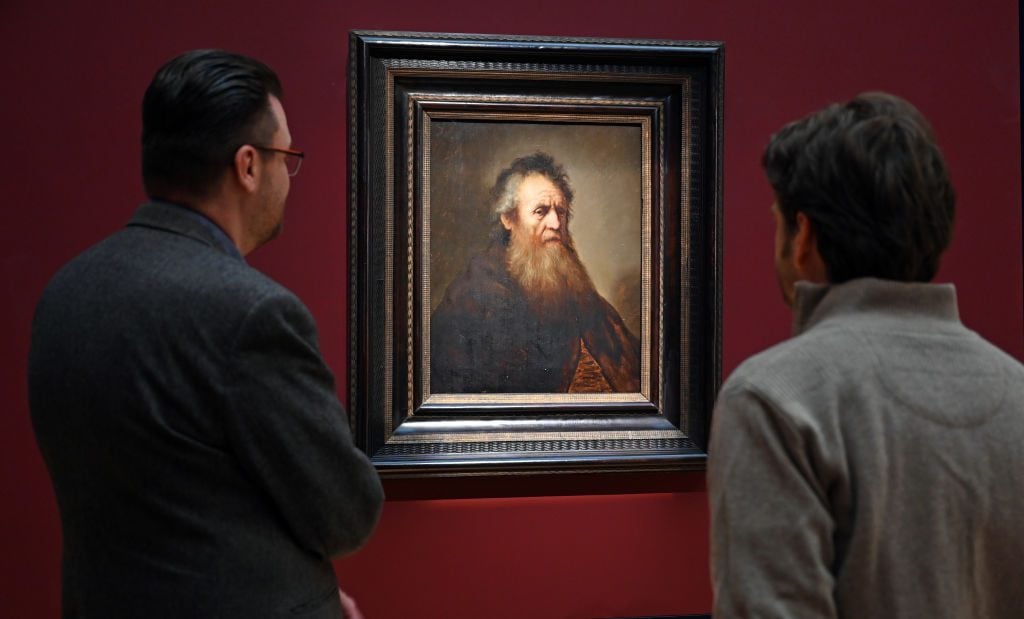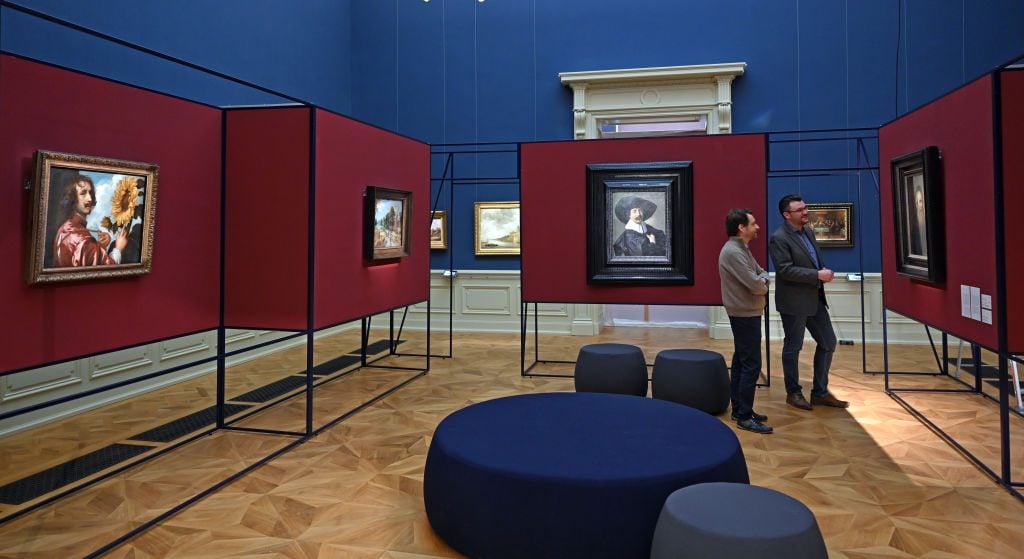Art History
A Dutch Painting, Once Stolen in an Infamous Art Heist, May Actually Be a Previously Unknown Rembrandt
Viewers can decide for themselves in an exhibition currently on view in Gotha, Germany.

Viewers can decide for themselves in an exhibition currently on view in Gotha, Germany.

Taylor Dafoe

In January of 2020, five Old Master paintings were returned to the Ducal Museum at the Schloss Friedenstein in Gotha, Germany, from which they had been stolen in an infamous art heist four decades prior.
Experts at the museum now believe that one of those artworks, a Dutch portrait of a bearded man, may have been far more valuable than previously realized—it may have been made by Rembrandt.
At least that’s the theory raised in the catalogue for “Back in Gotha! The Lost Masterpieces,” an exhibition at the Ducal where the canvas in question is currently on view, along with the other stolen artworks.
Even before the crime, mystery surrounded the painting’s provenance. Completed between 1629 and 1632, it was previously attributed to Rembrandt’s pupil Ferdinand Bol, and then to his contemporary Jan Lievens. But analysis completed upon the artwork’s return to the Schloss Friedenstein ruled both of those theories out.
“It’s a question of interpretation,” the show’s curator, Timo Trümper, told the Art Newspaper. “We can be sure it originated in Rembrandt’s studio. The question is how much of it is Rembrandt, and how much his pupils?”
“We have already talked to a lot of colleagues,” Trümper continued. “Half say: ‘No, it’s not Rembrandt, it’s one of his pupils.’ The other half say it’s an interesting theory and they can’t rule it out.” (The curator did not immediately respond to Artnet News’s request for further comment.)

Photo: Martin Schutt/picture alliance via Getty Images.
The artwork’s pentimenti, or underpaintings, raised researchers’ antennae, as did the quality of the composition. Also telling is the painting’s nearly identical resemblance to a Rembrandt portrait held by the Harvard Art Museums in Cambridge, Mass., which bears the artist’s signature on verso and is dated 1632—at the later end of the spectrum for the Schloss Friedenstein version. If indeed that one was made by the Dutch master, then it’s likely that the one at Harvard is a copy.
Still, it could be many years until we have a more conclusive idea of who created the canvas, Trümper told local reporters at an unveiling of the artwork last month. Leading up to a Rembrandt exhibition planned for Gotha in 2027, experts at the Schloss Friedenstein will continue to study the object and eventually present their findings at an international conference on the artist.
Meanwhile, Rembrandt’s role in the portrait might not be the only mystery solved in the “Back in Gotha!” exhibition catalogue. Also included in the book is an essay by a journalist with Der Spiegel that posits a man named Rudi Bernhardt helped steal the Old Master canvases and smuggle them across the border to West Germany in December 1979. Bernhardt, an East German train driver, died in 2016.
Also stolen that night 42 years ago were paintings by Frans Hals and Hans Holbein the Elder; a copy of an Anthony van Dyck self-portrait, completed by one of his contemporaries; and a landscape that came from the studio of Jan Brueghel the Elder.